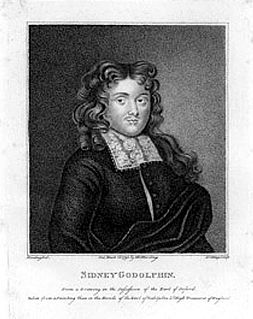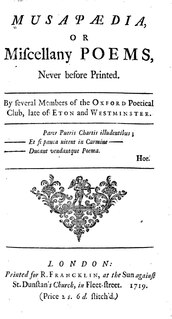Related Research Articles

Walter Aston, 1st Lord Aston of Forfar was an English courtier and diplomat.
The De vita libri tres or De triplici vita, was written in the years 1480–1489 by Italian Platonist Marsilio Ficino. It was first circulated in manuscript form and then published on December 3, 1489. It was constantly in print through the middle of the seventeenth century.

John Argyropoulos was a lecturer, philosopher and humanist, one of the émigré Greek scholars who pioneered the revival of classical Greek learning in 15th-century Italy.
Michael D. C. Drout is Professor of English and Director of the Center for the Study of the Medieval at Wheaton College. He is an author and editor specializing in Anglo-Saxon and medieval literature, science fiction and fantasy, especially the works of J. R. R. Tolkien and Ursula K. Le Guin.
Katherine Austen was a British diarist and poet best known for Book M, her manuscript collection of meditations, journal entries, and verse. She also, wrote the little-known country-house poem, "On the Situation of Highbury" (1665).

Elizabeth Singer Rowe was an English poet, essayist and fiction writer called "the ornament of her sex and age" and the "Heavenly Singer". She was among 18th-century England's most widely read authors. She wrote mainly religious poetry, but her best known Friendship in Death (1728) is a series of imaginary letters from the dead to the living. Despite a posthumous reputation as a pious, bereaved recluse, Rowe corresponded widely and was involved in local concerns at Frome in her native Somerset. She remained popular into the 19th century on both sides of the Atlantic and in translation. Though little read today, scholars call her stylistically and thematically radical for her time.

A series of manuscript prophecies concerning the Papacy, under the title of Vaticinia de Summis Pontificibus, a Latin text which assembles portraits of popes and prophecies related to them, circulated from the late thirteenth-early fourteenth century, with prophecies concerning popes from Pope Nicholas III onwards.

John Woodbridge VI (1613–1696) was an English nonconformist, who emigrated to New England. He had positions on both sides of the Atlantic, until 1663, when he settled permanently in New England.
Hieronymus Angerianus was an influential Italian neo-Latin poet from Apulia. He retired at a young age from the life of the Neapolitan court, to the family estates at Ariano di Puglia.
Gilbertus Anglicus was a medieval English physician. He is known chiefly for his encyclopedic work, the Compendium of Medicine, most probably written between 1230 and 1250. This medical treatise was an attempt at a comprehensive overview of the best practice in pharmacology, medicine, and surgery at the time. His medical works, alongside those of John of Gaddesden, "formed part of the core curriculum that underpinned the practice of medicine for the next 400 years".

The Cambridge Songs are a collection of Goliardic medieval Latin poems found on ten leaves of the Codex Cantabrigiensis, now in Cambridge University Library.

The Devonshire manuscript is a verse miscellany from the 1530s and early 1540s, compiled by three women who attended the court of Anne Boleyn: Mary Shelton, Mary Fitzroy, and Lady Margaret Douglas. Although the manuscript contains a number of original compositions, transcriptions, fragments and extracts of verse, the majority of the verses recorded are those composed by Sir Thomas Wyatt, of which many are unique to the manuscript. As such, it is not only an important witness in the Canon of Wyatt's poetry, but also an artefact that reveals much about the role of women in literary production and manuscript circulation in the early Tudor period.

Sidney Godolphin, 14 January 1610 (baptised) to 8 February 1643, was a minor poet and courtier from Cornwall who sat in the House of Commons between 1628 and 1643. He served in the Royalist army during the First English Civil War and was killed in a skirmish near Chagford in Devon on 8 February 1643.
Arthur Clifford (1778–1830) was an English antiquarian.
Helmut Gneuss is a German scholar of Anglo-Saxon and Latin manuscripts and literature.

A miscellany is a collection of various pieces of writing by different authors. Meaning a mixture, medley, or assortment, a miscellany can include pieces on many subjects and in a variety of different forms. In contrast to anthologies, whose aim is to give a selective and canonical view of literature, miscellanies were produced for the entertainment of a contemporary audience and so instead emphasise collectiveness and popularity. Laura Mandell and Rita Raley state:
This last distinction is quite often visible in the basic categorical differences between anthologies on the one hand, and all other types of collections on the other, for it is in the one that we read poems of excellence, the "best of English poetry," and it is in the other that we read poems of interest. Out of the differences between a principle of selection and a principle of collection, then, comes a difference in aesthetic value, which is precisely what is at issue in the debates over the "proper" material for inclusion into the canon.
Gertrude Aston Thimelby (1617–1668) was an English poet and author, who became a Roman Catholic nun late in life.
Steven W. May is an American academic and author specializing in English Renaissance poetry.

Epithalamion is an ode written by Edmund Spenser to his bride, Elizabeth Boyle, on their wedding day in 1594. It was first published in 1595 in London by William Ponsonby as part of a volume entitled Amoretti and Epithalamion. Written not long since by Edmunde Spenser. The volume included the sequence of 89 sonnets (Amoretti), along with a series of short poems called Anacreontics and the Epithalamion, a public poetic celebration of marriage. Only six complete copies of this first edition remain today, including one at the Folger Shakespeare Library and one at the Bodleian Library.
The English Broadside Ballad Archive (EBBA) is a digital library of 17th-century English Broadside Ballads, a project of the English Department of the University of California, Santa Barbara. The project archives ballads in multiple accessible digital formats.
References
- ↑ authorities.loc.gov
- ↑ Aldrich-Watson, Deborah (2000). The Verse Miscellany of Constance Aston Fowler: A Diplomatic Edition. Tempe, Arizona: Renaissance English Text Society. p. xxiii. ISBN 978-0-8018-6139-0.
- 1 2 3 4 Ezell, Margaret (1999). Social Authorship and the Advent of Print. Baltimore: Johns Hopkins University Press. p. 27. ISBN 978-0-8018-6139-0.
- ↑ Ezell, Margaret (1999). Social Authorship and the Advent of Print. Baltimore: Johns Hopkins University Press. p. 26. ISBN 978-0-8018-6139-0.
- 1 2 Aldrich-Watson, Deborah (2000). The Verse Miscellany of Constance Aston Fowler: A Diplomatic Edition. Tempe, Arizona: Renaissance English Text Society. p. x. ISBN 0-86698-252-3.
- ↑ Aldrich-Watson, Deborah (2000). The Verse Miscellany of Constance Aston Fowler: A Diplomatic Edition. Tempe, Arizona: Renaissance English Text Society. p. xxix. ISBN 0-86698-252-3.
- ↑ Aldrich-Watson, Deborah (2000). The Verse Miscellany of Constance Aston Fowler: A Diplomatic Edition. Tempe, Arizona: Renaissance English Text Society. p. xxix. ISBN 0-86698-252-3.